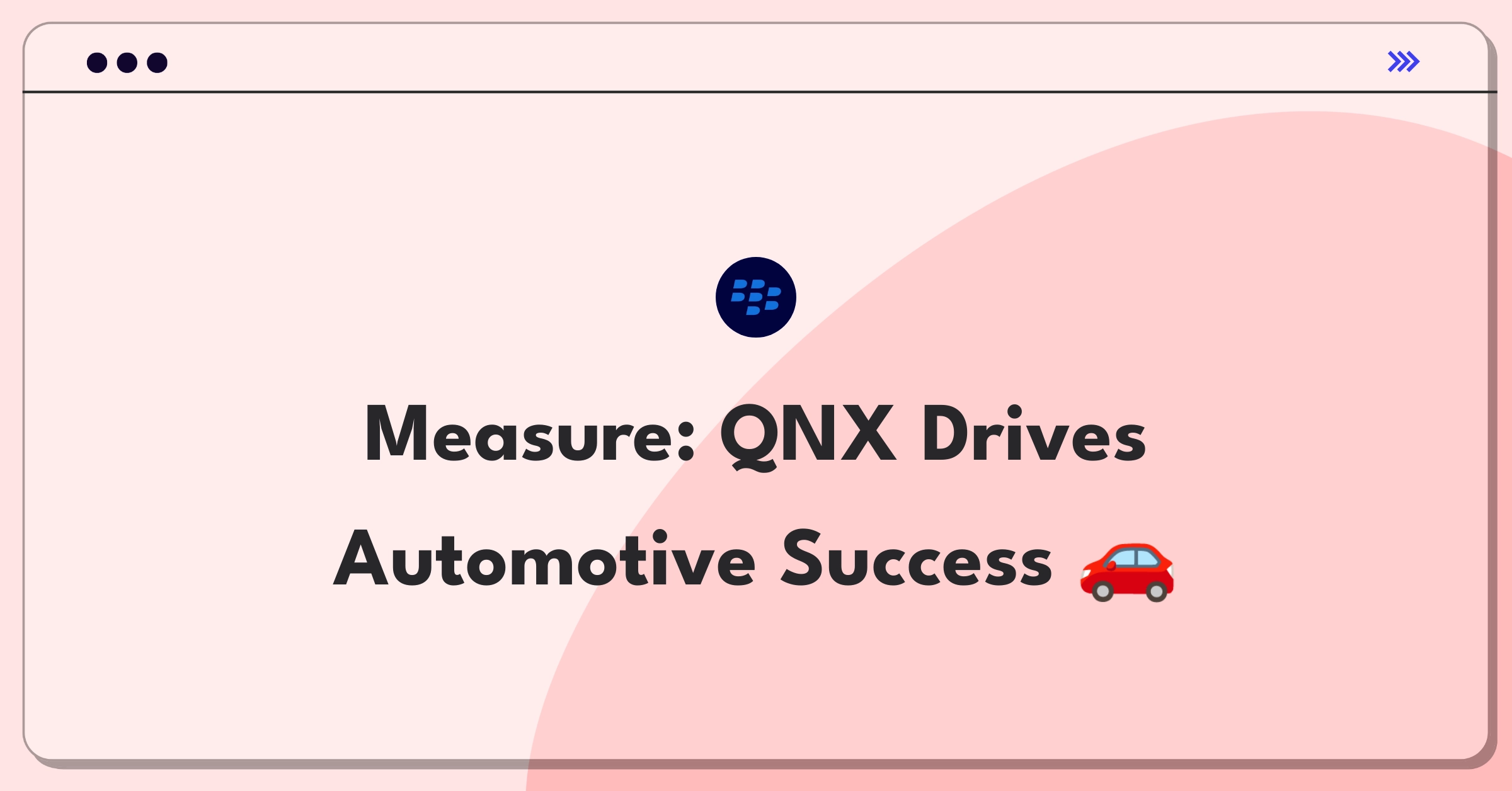Introduction
Evaluating BlackBerry's QNX operating system for automotive applications requires a comprehensive approach to product success metrics. To address this challenge effectively, I'll follow a structured framework that covers core metrics, supporting indicators, and risk factors while considering all key stakeholders in the automotive ecosystem.
Framework Overview
I'll follow a simple success metrics framework covering product context, success metrics hierarchy, and strategic initiatives.
Step 1
Product Context
BlackBerry's QNX is a real-time operating system designed for embedded systems, with a strong focus on automotive applications. It serves as the foundation for in-vehicle infotainment systems, advanced driver assistance systems (ADAS), and autonomous driving platforms.
Key stakeholders include:
- Automotive manufacturers (OEMs)
- Tier 1 suppliers
- End-users (drivers and passengers)
- Regulatory bodies
- BlackBerry's development team
The user flow typically involves:
- System boot-up and initialization
- User interaction with infotainment and vehicle controls
- Continuous background processes for safety and performance
QNX fits into BlackBerry's broader strategy of focusing on secure, reliable software for critical systems. It competes with other automotive operating systems like Android Automotive and Linux-based platforms, differentiating itself through its safety-critical certifications and real-time capabilities.
In terms of product lifecycle, QNX is in a mature stage but continually evolving to meet new automotive technology demands.
Software-specific context:
- Platform: Microkernel architecture
- Integration points: Hardware abstraction layer, middleware, and application frameworks
- Deployment model: Customized for each OEM and vehicle model
Subscribe to access the full answer
Monthly Plan
The perfect plan for PMs who are in the final leg of their interview preparation
$99.00 /month
- Access to 8,000+ PM Questions
- 10 AI resume reviews credits
- Access to company guides
- Basic email support
- Access to community Q&A
Yearly Plan
The ultimate plan for aspiring PMs, SPMs and those preparing for big-tech
- Everything in monthly plan
- Priority queue for AI resume review
- Monthly/Weekly newsletters
- Access to premium features
- Priority response to requested question


.png)